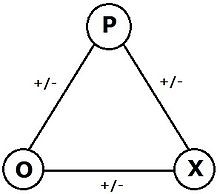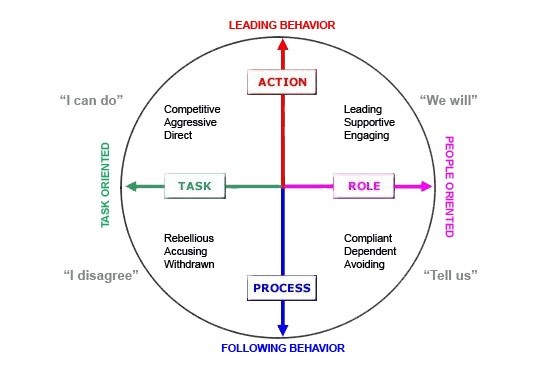Social Exchange Theory
Social Exchange Theory is a sociological framework that views social change as the result of exchange processes between people groups, which perform their functions using cost-benefit analysis. Groups in society are thought of as units somewhat like biological cells, which exchange energy and nutrients with one another to form complex systems. Social Exchange Theory takes themes from Structuralism and Rational Choice Theories. Sociologists George Homans and Claude Levi-Strauss are dominant voices in Social Exchange Theory, which gained dominance in the 1950s and 1960s. Important elements of the theory are the relationship between self-interest and interdependence, the evaluation of costs and rewards, and the nature of systems as closed or open. It also leans heavily upon Behaviouralist concepts of rewards and punishments, and like Behaviouralism, a common critique of Social Exchange Theory is that it is overly rational and reduces human interactions to cost-benefit calculations. Social Exchange Theory is commonly applied to economics, business models, and other macro concepts.
Equity Theory
Equity Theory is among the Justice Theories of Behavioural Economics and was developed by J. Stacey Adams in the 1960s. Themes in Equity Theory are the distribution of resources and fairness, which is established objectively through analysis of the contributions versus rewards. Equity Theory has many implications for managers when applied to business, as employees and businesses make decisions based on their own personal interests and well-negotiated contracts will take consideration of the costs and benefits to all parties involved.
Each individual unit has control of its inputs, which are contributions to the exchange (time, personal sacrifice, education, commitment, loyalty) that in turn contribute to outcomes, which are the results of the relationship with the other party (praise, money, prestige, sense of achievement, power). A successful relationship is negotiated with a balance of inputs and outcomes in mind. An imbalance of inputs or outcomes causes dissatisfaction in the relationship.
For example, an employee of a large organization inputs their time, skills, and education into their work, and for this sacrifice, they expect to receive salary and job security as well as other intangible rewards such as responsibility or appreciation. A shift in inputs can create dissatisfaction for the employee if these change without a subsequent change in outcomes, like a surge of new work that goes unrecognized or unrewarded.
Balance Theory
Balance Theory is a theory of Motivational Psychology proposed by Fritz Heider. This theory focuses on interrelationships and models these interactions through the use of symbols. The P-O-X model is used to illustrate relationship dynamics. In this model, “P” stands for Person, “O” stands for Other, and “X” stands for objects or things. These models are denoted positive (+) or negative (-) relationships between individuals and objects to denote psychological balance or imbalance. Cognitive balance is achieved in triadic relationships when either all three links are positive or two negatives with one positive. Two positive links with one negative denote an imbalance or a cognitive dissonance.

The diagram above is an example of a P-O-X model. Negative and positive relationships between parties have not been established in this diagram. P-O-X models can be used to explain the relationships between an individual’s opinion about a product due to celebrity endorsement.
For example, if P in the equation is a famous athlete, O is the consumer, and X is the brand of shoes that P endorses. If the relationship between P and O is positive, meaning the consumer has a favorable attitude towards the athlete (denoted in a diagram with a +), then P’s endorsement of shoes X (+) will likely result in a favorable view (+) towards shoes X by the consumer O. This equation of three positives is cognitively balanced.
However, if consumer O knows that shoes X are cheap quality and fall apart after wearing, there is a negative relationship between O and X (-). Now the relationship between the beloved athlete P and the faulty product they endorse (+) produces cognitive dissonance in consumer O, who admires athlete P (+). Consumer O may resolve this dissonance by either deciding that shoes X are fine after all, which changes the equation to three positives or abandoning their admiration for athlete P, which produces an equation of two negatives and one positive.
Criticisms of balance theory state that they use an overly simplistic model to express relationships between people, where there are often multiple factors that enter into the feelings one person may have for another (for example, domestic violence relationships or historical disagreements between groups).
Interpersonal Competence
Interpersonal Competence or Social Skills are the abilities to positively interact and communicate with other individuals. Positive interpersonal skills include effective communication, empathy, stewardship, responsibility, and leadership. When these skills are fostered in management, relationships tend to be more effective and positive with subordinates as well as colleagues.
Interpersonal competencies were divided into dichotomies by psychologist Timothy Leary in his Rose of Leary diagram, which is illustrated below. These include dominance vs. submission, love vs. hate, affiliation vs. aggression, and control vs. autonomy.

Above is an illustrated Rose of Leary that shows the relationships between the interpersonal attribute dichotomies. Individuals find themselves on some aspect of this spectrum depending on their personal combinations of these traits.